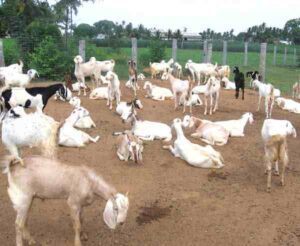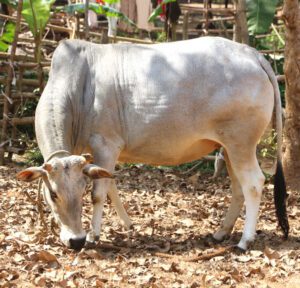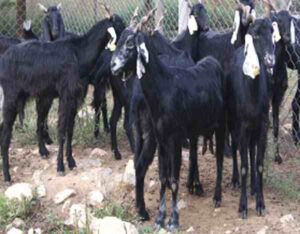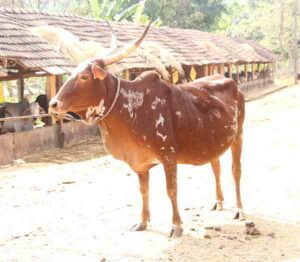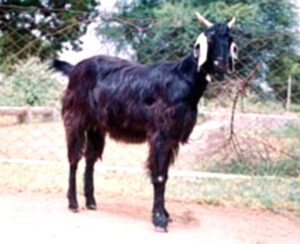Kankrej cattle are a breed of Zebu cattle. They originated from the Kankrej Taluka of Banaskantha district in the state of Gujarat in India. And the breed gets it name from it’s home tract ‘Kankrej‘.
They are also known by some other names such as Wagad, Waged, Wadhir, Wadial, Wadhiar, Bannai, Vaghiyar, Vadhiyar, Nagar and Talabda.
Kankrej cattle breed comes from southeast of the Desert of Cutch in western India, particularly along the banks of the rivers Banas and Saraswati which flow from east to west and drain into the desert of Cutch. Review characteristics, use and full breed profile of Kankrej cattle below.
Origin And History of Kankrej Cattle
As we have mentioned previously, the Kankrej cattle breed has originated from the arid and semi-arid regions of western India, primarily the Kankrej Taluka in the Banaskantha district of Gujarat.
This cattle breed is considered as one of the oldest cattle breeds in India, with a history dating back over 1000 years.
They were initially bred by the pastoral communities of Gujarat and Rajasthan, and their ability to thrive in harsh and challenging environments made them invaluable to the region’s nomadic herders.
Characteristics
Kankrej cattle are large in size. And it is one of the heaviest Indian cattle breeds. Their color varies form silver to gray to iron gray or steel black. Newly born Kankrej calves have rust red-colored polls, and this color disappear within 6 to 9 months.
Kankrej cattle have short face, their forehead is broad and slightly dished in the center. Their nose looks slightly upturned. Their hump, forequarters and hindquarters are darker than the barrel, especially in the bulls. They have lyre-shaped strong horns. And their horns are covered with skin to a higher point than in other breeds.
The ears of this cattle are large, pendulous and open. The hump in the bulls is well developed. The dewlap is thin but pendulous and bulls have pendulous sheaths. Their skin is slightly loose and of medium thickness. Pigmentation of the skin is dark.
Their legs are particularly shapely and well balanced. And have small feet which are round and durable. On average Kankrej bulls weight about 550-570 kg, and cows about 330-370 kg.

Adaptability
The Kankrej cattle are noted for their adaptability to diverse environmental conditions. They can thrive in areas with extreme temperatures. Their heat-tolerant coat and efficient thermoregulatory mechanisms make them well-suited for regions with high temperatures. They are actually good for raising in many areas throughout India.
The Kankrej cattle are also known for their ability to graze on poor-quality forage and withstand food scarcity. Their digestive system is highly efficient which allow them to extract maximum nutrition from even low-quality vegetation.
Milk Production
The Kankrej cattle are primarily known as draught animals. But they are also good for milk production purpose. They are classified as a dual-purpose breed and can be used for both dairy and agricultural purposes.
Generally, a Kankrej cow give around 1200 to 1500 kilograms of milk per lactation cycle. Their milk is of very good quality containing high fat content. And the milk is ideal for making ghee.
Temperament
The Kankrej cattle are known for their docile and gentle temperament. They are easy to handle and work with. They are very suitable for various agricultural tasks, including plowing, carting, and hauling.
Housing Requirements
Providing a suitable housing environment is very important for keeping Kankrej cattle healthy and active. A good house not only provide shelter but also helps to keep them free from adverse weather conditions and predators.
Although, housing need of these animals is very less. They just require a well-ventilated and spacious shelter. They can thrive well when they have clean and hygienic living spaces. Clean housing environments also helps to reduce the risk of diseases and other health problems. So, try to clean the house on a regular basis.
Feeding Requirements
Like many other domestic animals, feeding the Kankrej cattle with good quality and nutritious food is very important. They will stay healthy and perform better if you always try to provide them with good quality and nutritious food.
Provide them adequate green fodder as per their demand. And always provide them with enough clean and fresh drinking water.
Breeding
Breeding Kankrej cattle is very easy and simple. Your cattle will breed easily if you have a bull in your farm. You can also consider using AI for breeding your cows.
Caring
The Kankrej cattle are very strong and hardy animals, and they generally require less caring. Although, taking additional care will help them to grow better and stay healthy. Caring them is relatively easy and simple. Just provide them with appropriate shelter, ensure a clean and spacious living environment, and maintain good hygiene to prevent diseases.
Provide adequate nutrition, including high-quality forage and clean water. Try to provide regular veterinary care, deworming, and vaccination programs to safeguard their health.
Uses
The Kankrej cattle are very hardy and active animals. They are very highly prized as a fast and powerful draft cattle breed. The breed is also raised as a dairy cow in India.
Special Notes
Kankrej cattle is resistant to Tick fever and it shows very little incidence of contagious abortion and tuberculosis. It has also been observed that the red color is recessive.
As a very hardy breed, the Kankrej bullocks are used for road transport and agricultural operations. The cows are good milkers.
On an average, Kankrej cows yield about 1738 kg in a lactation period which ranges from 257-350 days. The average fat content in their milk is about 4.8 percent. The average age at first calving is about 39-56 months.
Kankrej cattle is a very important breed in the formation of some other popular cattle breeds. Review full breed profile of this cattle breed in the chart below.
| Breed Name | Kankrej |
| Other Name | Wagad, Waged, Wadhir, Wadial, Wadhiar, Bannai, Vaghiyar, Vadhiyar, Nagar and Talabda |
| Breed Purpose | Mainly kept as a draft animal, but also suitable for milk production in India |
| Special Notes | Hardy, Active |
| Breed Size | Heavy |
| Weight | Average body weight of Kankrej cattle ranges from 550-570 kg in bulls and from 330-370 kg in cows. |
| Climate Tolerance | All Climates |
| Skin Color | Skin color varies form silver to gray to iron gray or steel black. |
| Horned | Yes |
| Milk Yield | Good |
| Rarity | Common |
| Varieties | Single |
| Country of Origin | India |

